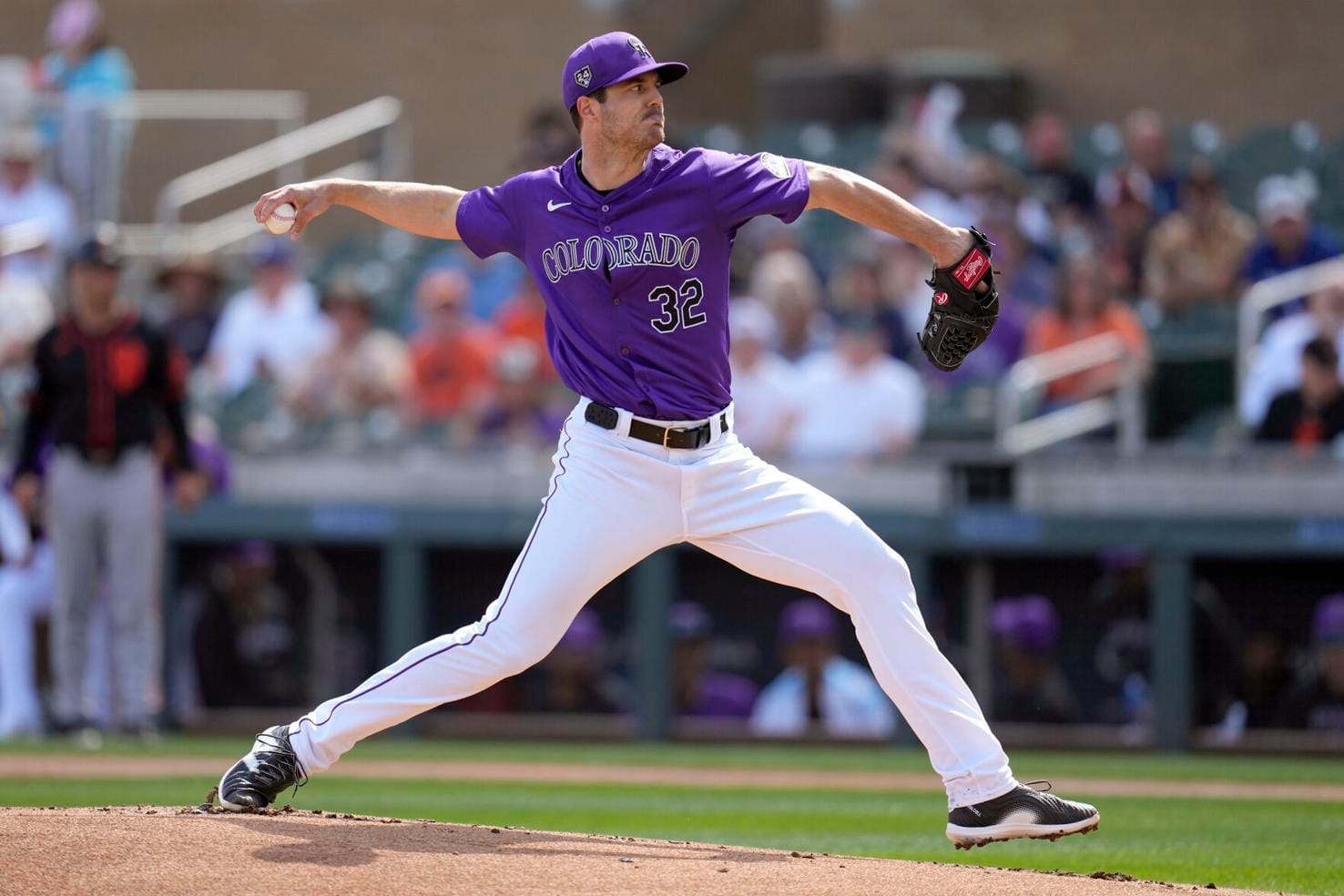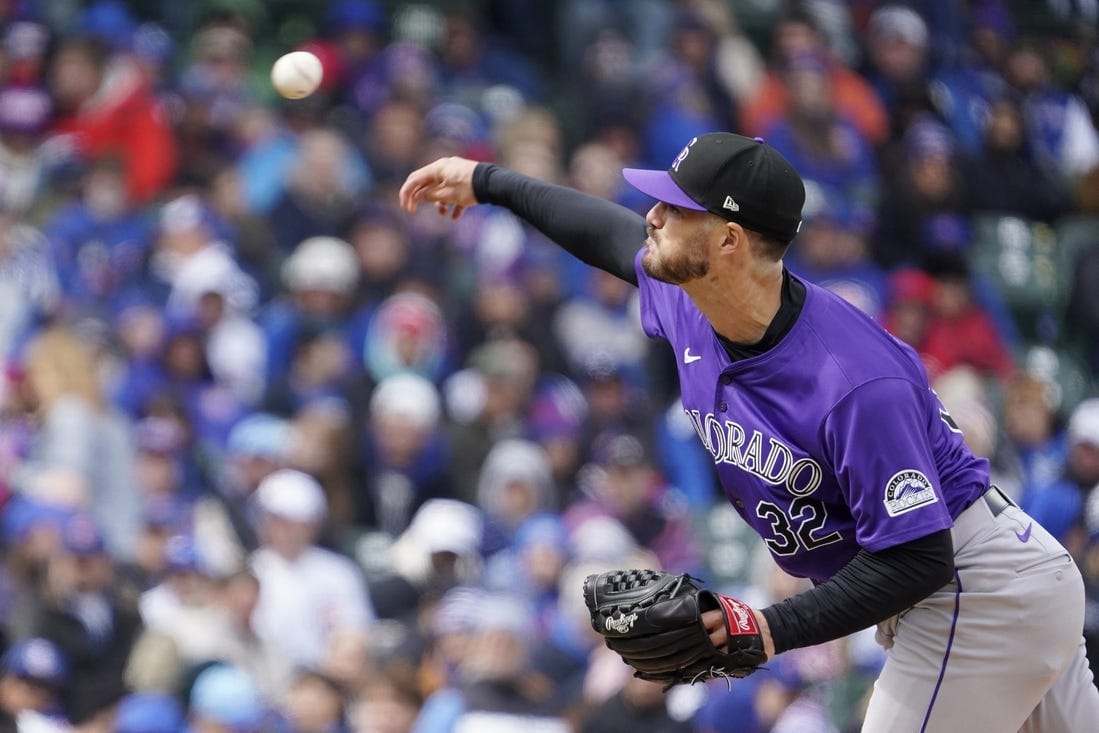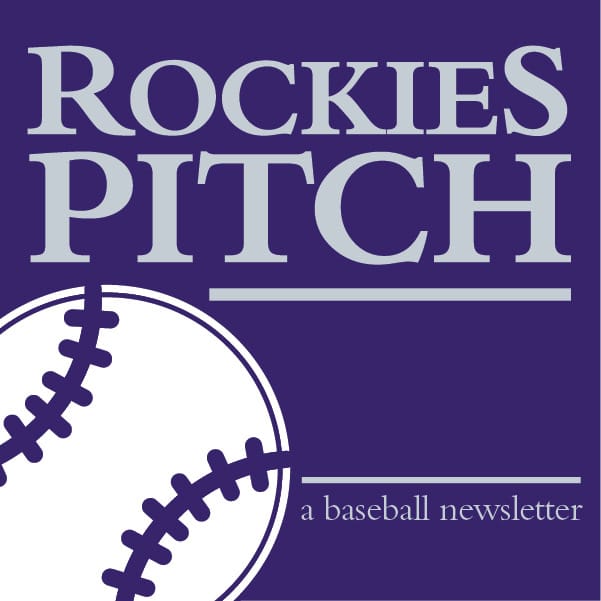Let’s Talk About Dakota Hudson
He’s probably not having the 2024 he’d hoped for.

Today’s newsletter will be a bit nonlinear in terms of organization because it seems like a fitting way to tell the story of pitcher Dakota Hudson’s time with the Colorado Rockies. (More about why this seems an apt strategy in a minute.)
So, I’ll start at the end, go to the beginning and the middle, and then return to the conclusion — so far.
★ ★ ★
Last Sunday, the Rockies DFA’d Hudson:
The Colorado Rockies announced the following moves today:
— Rockies Club Information (@RockiesClubInfo) July 7, 2024
- Selected the contract of RHP Tanner Gordon (#29) from Triple-A Albuquerque.
- Designated RHP Dakota Hudson for assignment.
The Rockies have 39 players on their 40-man roster.
Manager Bud Black said of the decision, “I think with Dakota, it was uneven. I think the walks were troublesome as the as the season unfolded. But, again with Dakota, great on the team added to the mix, his veteran personality helped a number of guys along the way. I think performancewise, it was it was time for us to look at somebody else.”
The corresponding move involved promoting RHP Tanner Gordon. It was time, Black said, to give younger players a change.
Maybe Give Us Some Background on Hudson first?
Sure.
As a refresher, the Cardinals drafted Hudson out of Mississippi State in the first round of the 2016 MLB Draft. He would then make his MLB debut in 2018, and he was good. In fact, in 2019, he came in sixth in Rookie of the Year voting. He finished the season with a 3.35 ERA in 174.2 innings.
Hudson was a dependable starter until undergoing Tommy John surgery in 2020. Things went downhill fast when he returned in September 2021.
In 2022, he had a 4.45 ERA and the lowest K/BB ratio in MLB (1.13). There was no improvement in 2023 when he earned a 4.98 ERA. Moreover, his control issues persisted (career 10.7% BB%). However, he’s a ground ball pitcher (lifetime 55.1% GB%) — and the Rockies love a ground ball pitcher.
The Cardinals DFA’d Hudson in September, and the Rockies signed him to a one-year, $1.5 million contract in January. This was surely, for Hudson, a one-year “prove it” contract that (so far) has not worked out.
Hudson has a three-pitch mix with a 91 mph fastball, a 91.6 mph sinker, and an 85.1 mph slider with the occasional changeup and curveball.
But His Time with the Rockies Was Not Good, Right?
That’s true.
During his tenure with the Rockies he made 17 starts (86.3 IP). He posted a 5.84 ERA with an 11.8% BB% and a 12.3% K%. So he walked almost as many batters as he struck out, which is not good.

That said, he did maintain his high GB% (52.4%).
I’m not here to persuade you that Hudson is a good pitcher because the recent data does not at all indicate that was the case.
However, he got precious little help from a sluggish Rockies offense.
During Hudson’s 17 starts, the Rockies have scored only 28 runs total when he had been a game. That’s a 3.09 run support average — you read that right — that ranks as the sixth-lowest in the Majors and the third-lowest in the NL (with a minimum of 16 starts).
Even worse, the Rockies offense has provided no — as in zero — run support in six of his 16 starts and only one in three of his starts. In his last four starts, Hudson had three total runs of support.
Compare that with the 5.47 RSA he had with the Cardinals (2018-23), and a fairly stark contrast becomes clear.
Hudson was already pitching with a thin margin for error; the lack of supporting offense took that away.
Plus, Coors Field did not work for him. On the road, Hudson had an ERA of 3.72; on the road, that ballooned to 8.26.
Surely, there was a part of him that was happy to be released by the Rockies. In a league overwhelmed with pitching injuries, perhaps another team would be willing to give him a chance in a ballpark that was not located at 5280 ft.
That did not happen.
So, What’s Next?
Yesterday, the Rockies announced that Hudson had cleared waivers.
RHP Dakota Hudson has cleared waivers and has been outrighted to Triple-A Albuquerque.
— Rockies Club Information (@RockiesClubInfo) July 11, 2024
In other words, he moved from 5280 ft in Denver to 5312 ft in Albuquerque.

As Thomas Harding puts it, “Hudson will try to find his form at an even greater altitude in Albuquerque. Reducing walks (a National League-high 46) can help, regardless of the altitude.”
If the Rockies do opt to trade Austin Gomber and Cal Quantrill, there’s a good chance Hudson might find his was back into the starting rotation.
Whatever happens, here’s hoping Dakota Hudson can find his way through.
What I’m Reading
• Kenneth Weber’s “Occam’s Razor and the Colorado Rockies in the 2024 Draft” (Purple Row) — The MLB Draft starts on Sunday. Weber outlines some possibilities.
• Thomas Harding’s “Toglia 'Making Strides' in Pursuit of Everyday First-base Job” (MLB.com) — He’s hit 12 home runs — and average of a home run every 14.46 at-bats. Now can Michael Toglia find consistency at the plate?
• Brock Craven’s “Chase Dollander discusses representing Spokane and Colorado Rockies ahead of All-Star Futures Game” (SWX) — The Rockies top prospect has probably pitched his last game at High-A. (Roster moves are expected next week.) Dollander discusses going to Arlington this weekend.
• Kevin Henry’s “Tanner Gordon Talks Colorado Rockies-Atlanta Braves Trade, MLB Debut, More” (Just Baseball) — When Dakota Hudson was DFA’d, Tanner Gordon’s promotion was the corresponding move. Kevin Henry talks with him about the change.
• Jon Becker’s “Top of the Order: Brenton Doyle’s Breakout May Shape the Rockies’ Future” (FanGraphs) — No, the Rockies are not trading Brenton Doyle.
Closing Thoughts
And that’s it for this week.
Here’s wishing everyone a good weekend and a Happy All-Star Break!
Thanks for reading —
Renee
Rockies Pitch is a newsletter that focuses on Colorado Rockies baseball and tries to tell the stories no one else is.





